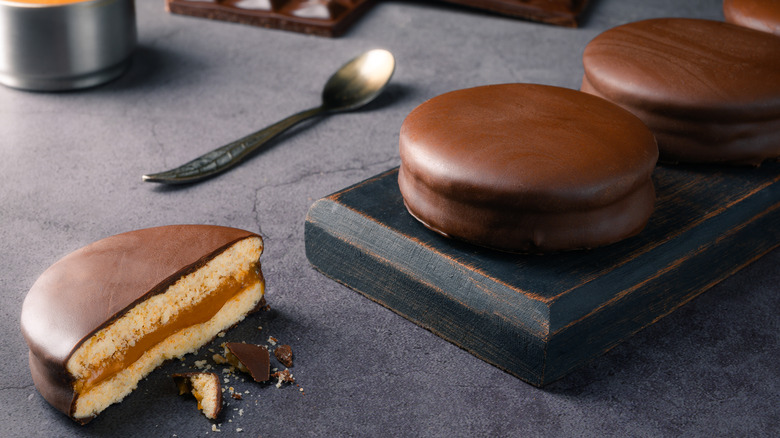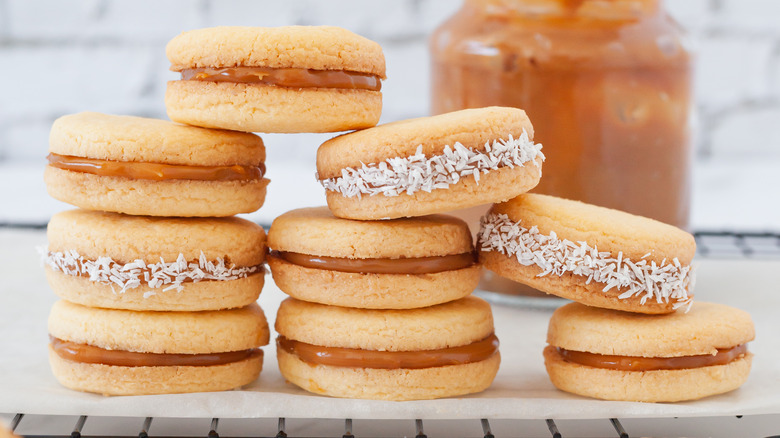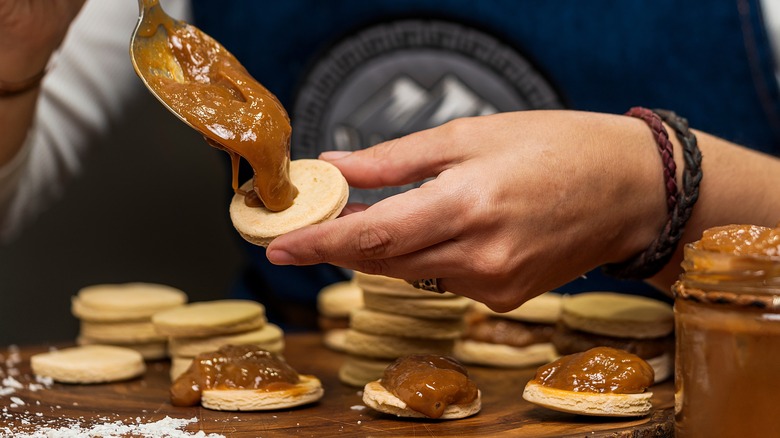Alfajores Are The Decadent Toffee-Filled Shortbread You Need To Try
Cookies are one of the absolute best desserts in the world. Whether you're delicately dipping brittle biscuits during an afternoon spot of tea, dunking fistfuls of Oreo into a tall glass of milk, or piping icing onto a trayful of holiday-shaped sugar cookies, your sweet tooth is sure to be satisfied.
There is a wide world of cookies out there, so you'll never run out of treats to try. (If you want to sample a few soon, here are our 25 favorite cookie recipes). If you're looking to bring together the rich flavor profiles of chocolate and buttery brown sugar, you can try your hand at baking chocolate chip cookies. Alternatively, you could opt for something a little simpler, but just as sweet, with these shortbread cookies. However, if you're really looking to bring your dessert game to the next level, there's a particular type of shortbread that is an absolute must-have.
What are alfajores?
According to Matero, alfajores feature two buttery shortbread cookies, which serve as the bread for a dulce de leche sandwich. Southern Living tells us that dulce de leche is made by simmering milk and sugar together, resulting in a sweet, sticky paste that is less runny than caramel and perfect for smearing on sweets. When you're enjoying alfajores, the shortbread melts away in your mouth, which allows the dulce de leche to seep in and fill the cracks.
The basic shortbread setup of alfajores is relatively universal, but there are countless different ways for bakers to customize their cookies. You can top the treat with extra sugar to add crunch and flavor or dip it in chocolate, per MasterClass. Some regional variations on alfajores leave out the dulce de leche altogether. In Chile, bakers use a cane syrup cream called chancaca, and in Peru, the cookie is filled with honey and molasses.
The past and present of alfajores
Today, alfajores are most commonly associated with South America. However, the dessert did not originate there. According to Alfajores Bakery, alfajores can be traced all the way back to the eighth-century Middle East. Moorish tribes introduced a version of the cookie to Spain, and Spanish colonists subsequently brought it to South America, where it developed into the dulce de leche sandwich that you can enjoy today. However, it wasn't until the 1950s that the cookie was first mass-produced.
MasterClass explains that the dessert's Spanish name is likely derived from Arabic. A few possible terms that preceded the cookie's current title are al-fakher, or luxurious, and the Arabic term for filled, al-hasu.
In the modern era, the unofficial world capital of alfajores is Argentina, where the crumbly cookie is available on every corner, per Matero. They serve as the perfect pairing for a piping hot cup of yerba mate or coffee, via Lucia's Alfajores.


